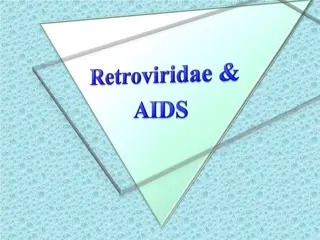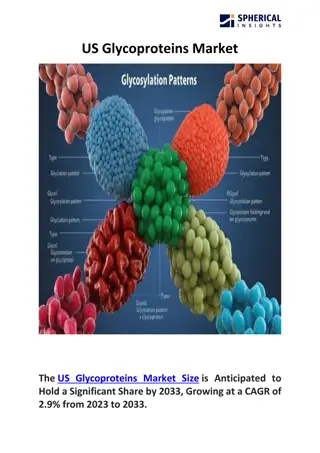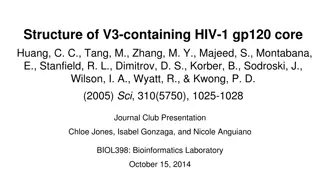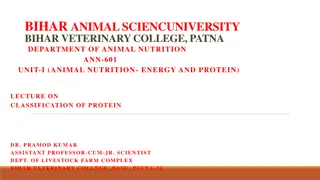Understanding Extracellular Matrix (ECM) and Its Functions
Extracellular Matrix (ECM) is a complex network of proteins, glycoproteins, and macromolecules that provide structural support, regulate cell activities, and play crucial roles in various tissues. It consists of two main types - interstitial matrix and basement membrane, each serving specific functi
12 views • 25 slides
Understanding Hypothalamus and Pituitary Hormones in Clinical Pharmacology
Peptides and glycoproteins are secreted by the hypothalamus and pituitary, regulating anterior pituitary hormones. Hormones like adrenocorticotropic hormone (ACTH) and corticotropin-releasing hormone (CRH) play crucial roles. Synthetic adrenocorticosteroids have limited the use of corticotropin for
1 views • 28 slides
Human Immunodeficiency Virus
HIV, a member of the lentivirus subfamily of retroviruses, causes Acquired Immunodeficiency Syndrome (AIDS). HIV-1 and HIV-2 have distinct characteristics, with HIV-1 being global and HIV-2 primarily in West Africa. The virus encodes reverse transcriptase and has an envelope containing glycoproteins
1 views • 31 slides
Hemostasis and Blood Coagulation Mechanisms Explained
Hemostasis refers to the prevention of blood loss through vascular constriction, platelet plug formation, blood clotting, and fibrous tissue growth. Vascular constriction occurs immediately after vessel damage, initiated by myogenic spasm, autacoid factors, and nervous reflexes. Platelet plug format
0 views • 25 slides
Optimizing Glycoprofiling Analytical Method for Therapeutic Proteins
Glycoproteins play a significant role in biopharmaceuticals, necessitating detailed characterization due to their structural heterogeneity from glycosylation. This study focuses on developing a robust and cost-effective characterization method using a Definitive Screening Design to optimize an HPAE-
0 views • 13 slides
Understanding Cell Membrane Structure and Proteins
Exploring the basic structure of membranes, the distribution of proteins within the membrane, intrinsic vs. extrinsic proteins, the fluid mosaic model, phospholipids forming the bilayer, the role of hydrophilic and hydrophobic parts in phospholipids, polysaccharides, and the differences between glyc
0 views • 18 slides
US Glycoproteins Market
The US Glycoproteins Market Size is Anticipated to Hold a Significant Share by 2033, Growing at a CAGR of 2.9% from 2023 to 2033.\n\n
0 views • 7 slides
Understanding the Role of V3 Region in HIV Entry to CD4 T-Cells
The V3 region of gp120 plays a crucial role in HIV entry to CD4 T-cells by determining the coreceptor usage. Studies focus on the structural aspects of V3, its conservation, coreceptor binding, and antibody accessibility. The HIV envelope structure, including trimeric spikes with gp120 and gp41 glyc
0 views • 24 slides
Classification of Proteins in Animal Nutrition: Simple Proteins vs. Conjugated Proteins
Proteins in animal nutrition are classified into two main groups: simple proteins and conjugated proteins. Simple proteins can be further divided into fibrous and globular proteins based on their shape, solubility, and chemical composition. Fibrous proteins, such as collagens, elastin, and keratins,
0 views • 18 slides








